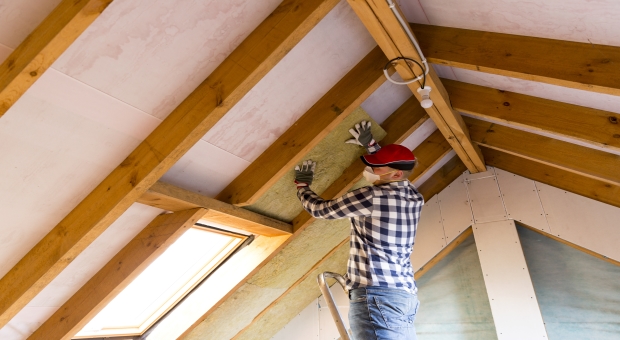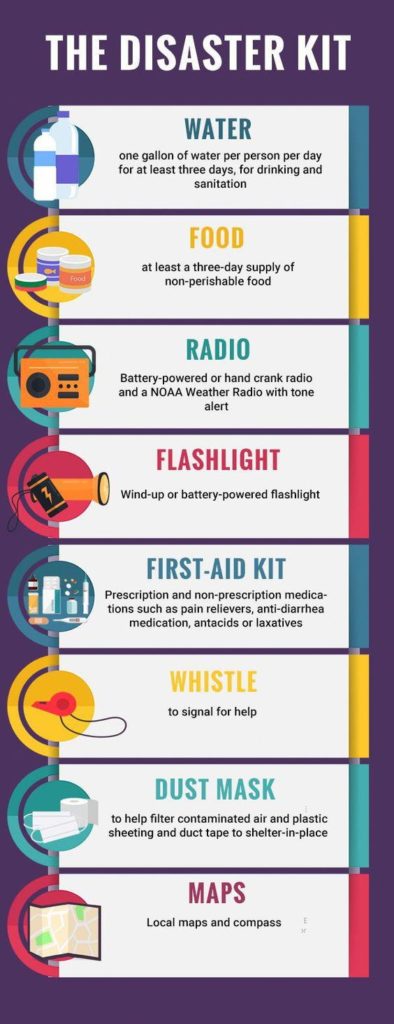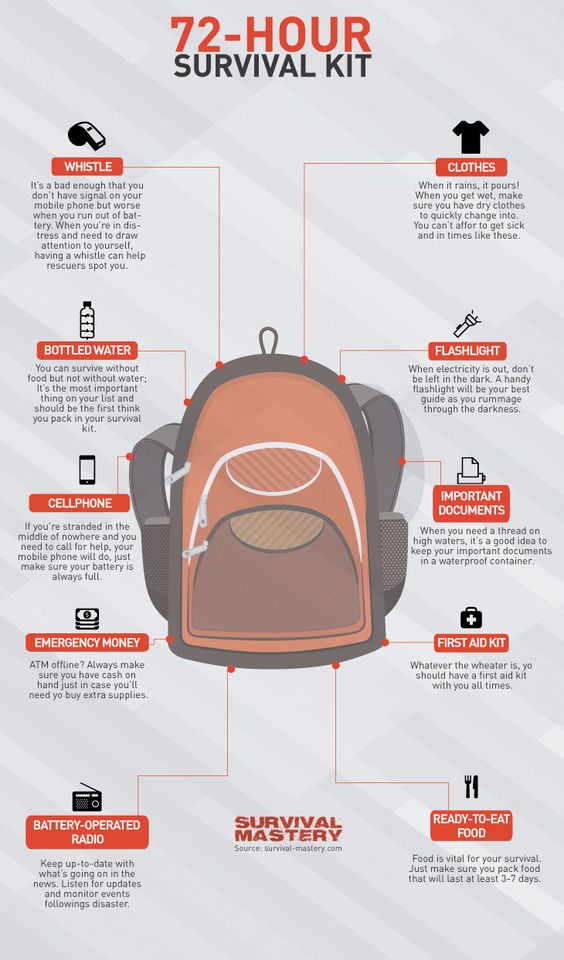These times come with unusual weather patterns that include hurricanes and other sources of freakish floods.
The best way to survive a flood incident is to be long gone before it starts. If that is not an option, then making sure your attic has sufficient supplies and tools is the next best thing. Floods can happen unbelievably fast. I have seen water rise in just a few minutes to a point where it is not safe to walk or drive through an area.
How to Prepare Your Attic for Storing Supplies and Tools
If you are like most people, your attic is probably unfinished and is filled with boxes or bins that you haven’t opened in decades. Before you can live in your attic during a disaster, you need to do the following:
- Clear the area so that you have room to live. This includes an area to hold a bucket commode, a place to cook, room to sleep, and areas to store your supplies. Even if you take one hour a day and do nothing but fill up bags and throw them out, eventually you will have plenty of room.
- The next thing you will need to do is control the temperature. It will not be of much use to store food or medicines in an attic that gets very hot in the day, or freezes in the winter. By the same token, trying to live in an attic with extreme temperatures will also be problematic. If the attic has windows, invest in a box fan that you can use to draw cold air in at night during the summer months. Invest in a weather station with a remote sensor and keep track of the temperatures during the day. Look for passive heating and cooling methods that will enable to you to keep a livable temperature in the attic at all times.
- Having a source of electricity in the attic is also important. This is a good time to see where you can mount solar panels or other devices to generate electricity. Even if you have electricity in the attic, you should still be able to generate your own in case commercial power is not available.
- Once you have these basic under control, set up your fields of fire and defensive methods in case you are in a situation where you are trying to stay safe from rioters or criminals that exploit flood situations.
Other Aspects of the Attic You Must Consider
Most people don’t realize how much the prepping supplies weigh. Even if the attic is finished, with strong floors and walls, it is still important to disburse items so that weight is evenly distributed. If the attic is unfinished, putting a lot of weight on exposed beams or unprotected sheet rock can cause the attic floor to collapse.
As a matter of safety, it is not wise to store items that can catch fire or explode. This includes batteries and propane canisters. Even if you can control temperature and humidity, a power failure can leave you with a dangerous situation. You are much better off bringing these supplies into the attic when you need them.
It is very important to realize that the attic is a last ditch survival location when you cannot evacuate. Damage to the roof from the weather event can still create a very dangerous situation that you must be prepared for. Always keep two flood high water survival kits on hand; one in the attic and the other on the next floor down, where you can get to it easily.
Getting Ready to Live in Your Attic
You must account for all aspects of living that must be carried out in the attic once you begin taking shelter there. These are important areas that should be part of a comprehensive plan:
- Routine survival supplies such as food, medicine, first aid kits, water, water purification supplies, defense aides, and basic tools that you can use to adjust your living conditions.
- Extra clothing including at least two sets per person for different weather conditions.
- Personal hygiene supplies that do not require using water. Wet wipes and antibacterial hand sanitizers, and shampoos that do not require water use are all helpful. If possible, see if you can set up a small camp shower that has its own water tank.
- Camping gear is ideal for eating utensils, bedding, chairs, and other items that you might need during your stay in the attic.
- Food, and any other supplies you may need for your pets.
- Keep everything in waterproof containers or tubs. Choose ones made of heavy duty plastic or metal. They should be water and air tight. Use ziploc bags internally to add an extra level of water and air proofing. Do not forget to label each container with what is inside, as well as keep a separate inventory in your personal papers. It also helps to anchor each container to the floor.
- Make sure your paperwork and important documents are updated. This includes property or rental insurance with riders for floods and other problems. Make sure that you know what kind of documents you need to prove the value of items lost in the crisis. You may need to do an inventory of personal property complete with photos, and appraisals if necessary.
- Keep all important documents in a waterproof and fireproof lock box that you can carry with you.
- Have a communication plan and devices ready to use. Keep a list of important phone numbers and other contact information. This includes pre-set meeting places with friends or family members in case you have to leave the attic.
- It is possible that cell phones and internet will be working during a crisis. Keep a crank radio, a hand held ham radio (plus license), flares, lasers, mirrors, and other signaling devices onhand. Even though Morse code is considered outdated, you should still know how to signal SOS using sound, light, smoke signals, or anything else that might be detectable to rescuers once they reach your area.
- Laminated instruction cards for managing medical issues, and anything else that you might need to know while living in the attic. Do not forget to practice living in the attic for extended periods of time so that you can get some ideas about where you need to make improvements in your plans and preparations.
- Have floatation devices like life jackets, life preservers, small self inflation rafts, or through rings on a rope.
Survival And Escape Tools
If floods or some other problem drove you to take refuge in the attic, there is a very good chance you will not be able to go back downstairs. On the other hand, you may also not be able to get out the window and onto the roof safely. Even a sturdy fire escape can be blown away in a bad storm or damaged to a point where you cannot use it.
Here are basic survival and escape tools that you should keep in the attic at all times:
- Axes – A fireman’s short or long handle axe with the wall or roof penetrator head design.
- Hand saws – To cut wood or metals.
- Chain saw – Get a good gas chainsaw. Bring it into the attic when you need it along with a gas can filled with the proper gas oil mix in it. Do not forget extra chain saw oil to mix with fresh gas. For safety, don’t forget the heavy work gloves and a heavy duty tow strap to pull cut wood or other items out of the way.
- Sledge Hammers – 5 or 10 pound sledge hammers to help break through walls and roof to keep from being trapped.
- Crowbars, Pinch Bars, And Car Jack- Used to bend or move beams out of the way.
- Bolt Cutters – Used to cut construction metal building bolts. Try to stay away from cutting electrical power wiring, even if you think it is dead.
- Fix blade knives, Folding pocket knives, And Heavy Duty Shears – Used to cut through shingles and/or roofing tar paper.
- Ropes – Used to tie down supply boxes and safety lines tied to humans and pets, or as lashing material.
- Heavy Gloves – Used to protect your hands when using tools or handling sharp roof and wall debris.
Unlike other parts of your home, the attic is often ignored to the point where it is unlivable. With time, the structural integrity of the attic floors or walls may be compromised. Take your time and pay attention to details when getting your attic ready to live in. Depending on the amount of stuff already stored there and other factors, you may have to do a number of things before you can store supplies there and actually live there in a time of need.













































































